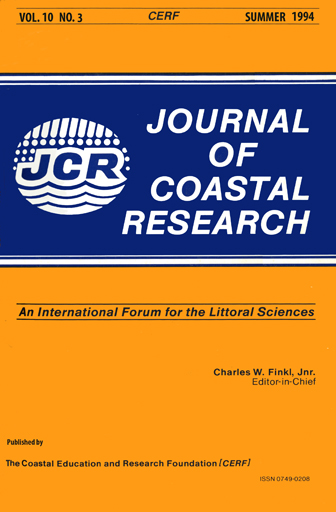Post-Disposal Behaviour of Sandy Dredged Material at an Open-Water, Inner Shelf Disposal Site
Keywords:
Bedforms, consolidation, fate of dredged material, geomechanics, sediment texture, sediment transport, static friction angleAbstract
Geotechnical properties of dredged material placed in an open-water disposal site were monitored over a six-month period immediately following disposal to determine the consolidation behaviour of the spoil mound and the impact of dredged material on sediment transport behaviour.
The dredged material consisted largely (> 90%) of fine to medium sand, with a significant proportion of gravel-sized pumice and shell fragments (1-10%), and minimal (< 0.5%) mud. This distribution was compatible with the natural sediment at the dump ground.
Immediately after placement, mean grain size and settling velocity of surficial sediments increased compared with pre-disposal values, and sorting reduced. Dredged material bulk density and static friction angle were lower than those of pre-existing dump ground sediments, yet moisture content was comparable. These changes are attributed to the dredging and injection processes .Due to the low mud content, the dredged material consolidated immediately upon deposition, attaining normal consolidation with respect to ambient stresses within a short period. Reduced static friction angles resulted in an enhancement of the potential for bedload transport relative to pre-disposal rates. Increased settling velocities resulted in decreased potential suspended sediment transport. Lower shear strength of the dredged material resulted in larger bedforms on the dump ground compared with surrounding areas. With time, properties of the materials reverted towards pre-disposal conditions as a result of increased sorting and packing of grains. However, after six months, the properties had not completely returned to previous conditions.


